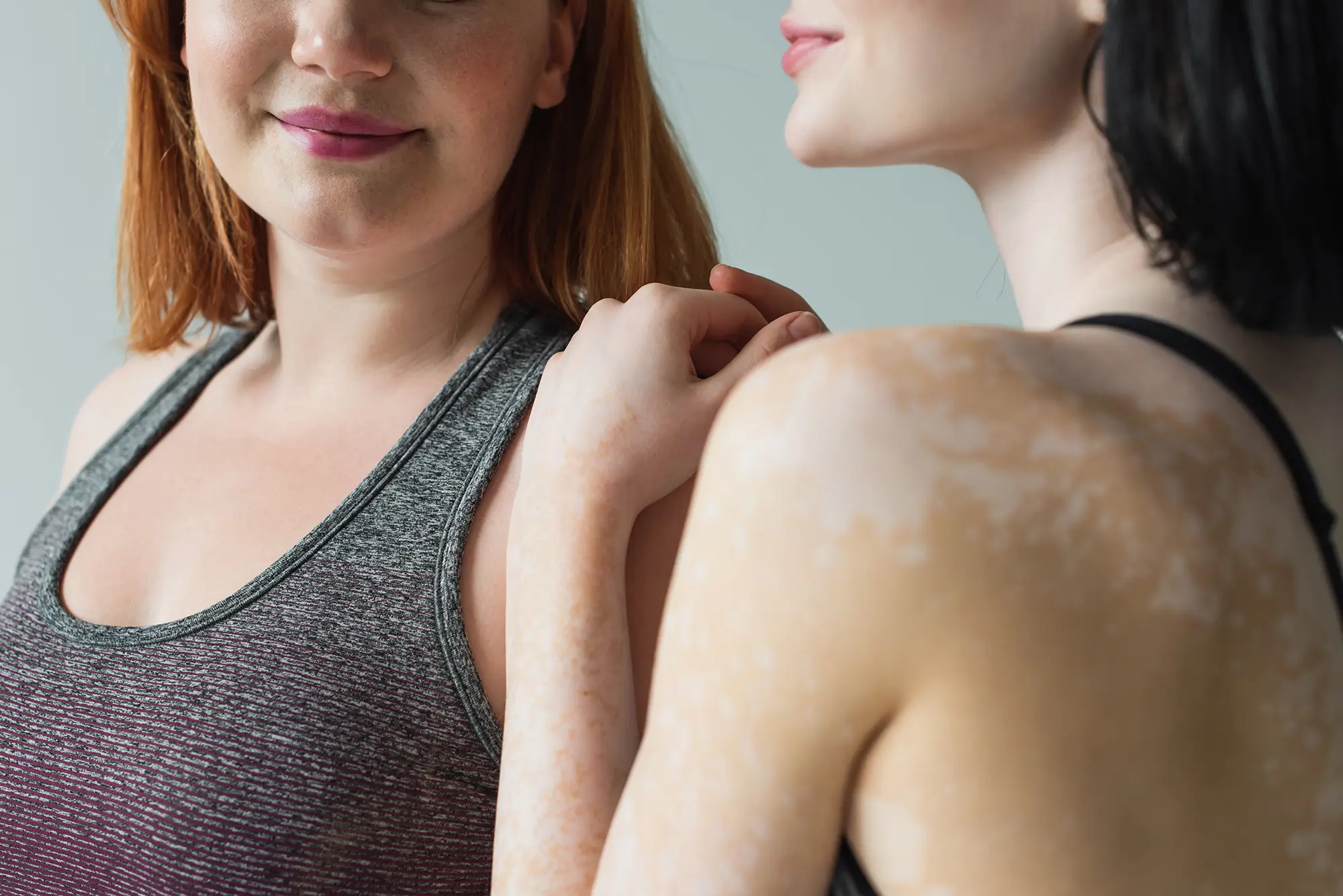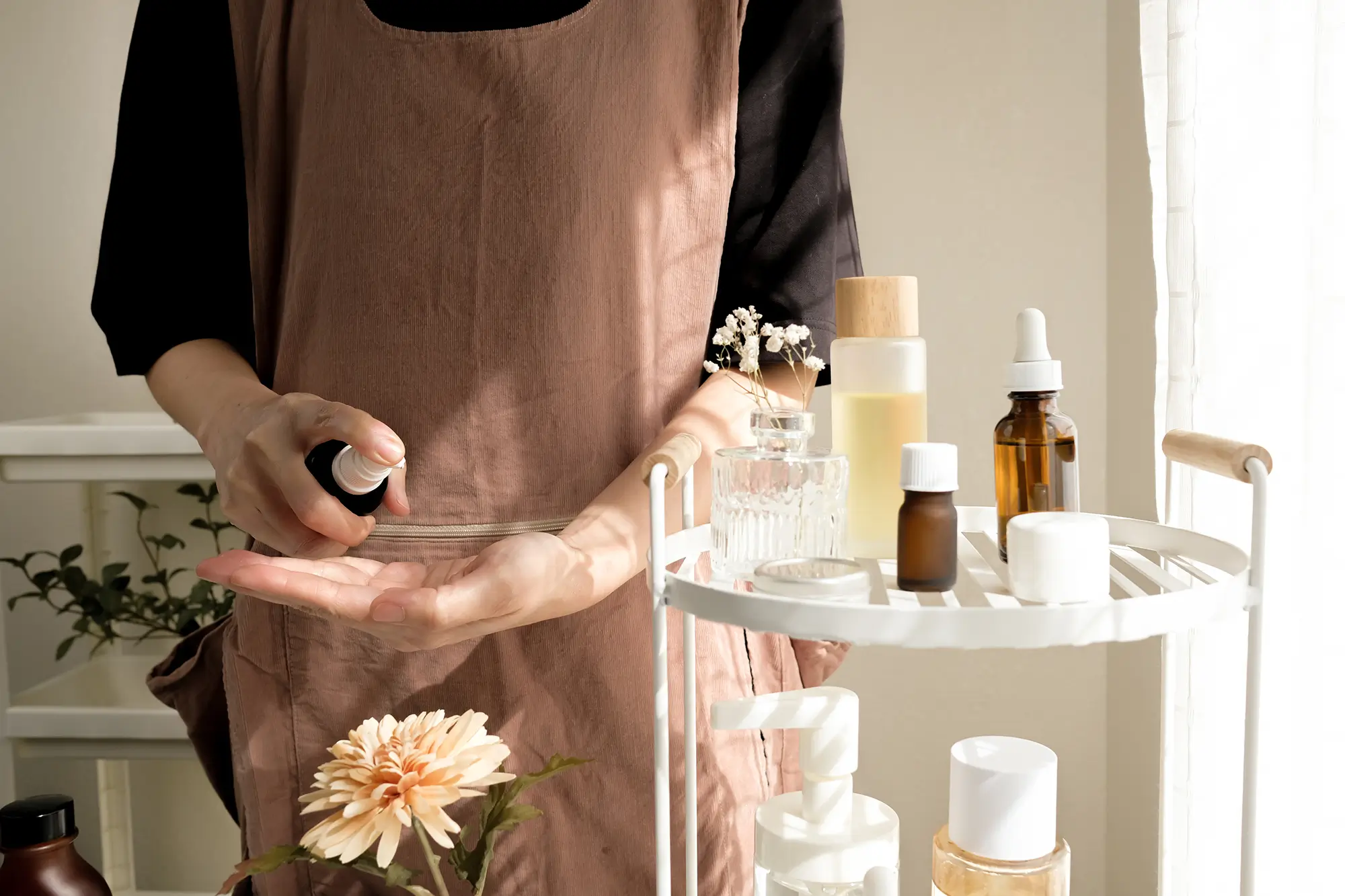We’ve all experienced it—those stubborn dark spots, patches of redness, or uneven skin tone that seem to appear out of nowhere and refuse to fade. Skin discoloration is one of the most common concerns we see at Healthy Glow Aesthetics, yet it’s also one of the most misunderstood.
Let’s shed some light on what’s really happening with your skin and how to effectively address it.
Not All Discoloration Is Created Equal
That brown spot on your cheek? It’s probably not the same as the one on your forehead. Skin discoloration comes in several distinct forms, each with different causes and treatments.
Understanding which type you’re dealing with is the first critical step toward effective treatment.
Melasma: The Hormonal Trigger
What it looks like: Symmetrical brown or grayish-brown patches, typically on the cheeks, forehead, upper lip, and chin.
What’s happening: Melasma is primarily driven by hormonal fluctuations, which is why it’s sometimes called the “mask of pregnancy.” Estrogen and progesterone stimulate melanocytes (your pigment-producing cells) to go into overdrive when exposed to even minimal UV light.
Common triggers:
- Pregnancy
- Birth control pills
- Hormone replacement therapy
- Sun exposure
Why it’s challenging: Melasma can be stubborn because it’s triggered by internal factors that can’t always be eliminated. However, with the right approach, it can be significantly improved.
One of our clients, a new mom who developed melasma during pregnancy, saw a 70% improvement in her patches after three months of targeted treatments and strict sun protection. The key was consistency and patience.
Post-Inflammatory Hyperpigmentation (PIH): The Aftermath
What it looks like: Dark spots that appear after acne, injury, or inflammation.
What’s happening: When your skin becomes inflamed (from a pimple, scratch, or reaction), the healing process triggers melanin production. This excess melanin remains in the skin long after the inflammation resolves.
Common triggers:
- Acne lesions
- Eczema or psoriasis flares
- Bug bites
- Aggressive skincare treatments
The good news: PIH typically responds well to treatment, especially when addressed early. A recent client with severe post-acne PIH saw dramatic improvement after a series of targeted chemical peels combined with home care using our SkinBetter Even Tone serum.
Solar Lentigines (Sun/Age Spots): The Sun’s Signature
What it looks like: Flat, brown spots on sun-exposed areas like the face, hands, and chest.
What’s happening: Years of cumulative sun exposure cause DNA damage to melanocytes, leading them to produce excess melanin in concentrated areas. Unlike freckles that may fade in winter, these spots are permanent without treatment.
Why they develop:
- Unprotected sun exposure
- Tanning bed use
- Genetic predisposition
- Age (they become more prevalent after 40)
Treatment reality: While these spots can be stubborn, they respond beautifully to the right treatments. Our combination approach of Hydrafacials with brightening boosters and professional-grade brightening products has helped countless clients fade these unwanted souvenirs of summers past.
Redness and Rosacea: The Vascular Challenge
What it looks like: Persistent flushing or redness, sometimes with visible blood vessels, typically on the central face.
What’s happening: Unlike pigmentation issues, this discoloration comes from dilated blood vessels near the skin’s surface. In rosacea, these vessels expand too easily and remain dilated longer than they should.
Common triggers:
- Sun exposure
- Spicy foods and alcohol
- Temperature extremes
- Certain skincare ingredients
Management approach: While redness can be challenging to completely eliminate, modern treatments can significantly reduce its appearance. One of our male clients with persistent cheek redness saw remarkable improvement with a customized routine of gentle products from our Hydrinity line combined with LED therapy sessions.
Breaking the Discoloration Cycle
No matter what type of discoloration you’re experiencing, there are three universal principles to successful treatment:
1. Protection Is Non-Negotiable
This cannot be emphasized enough: without diligent sun protection, no discoloration treatment will succeed. UVA rays and even visible light can trigger or worsen all types of pigmentation.
Our recommendation: A mineral sunscreen with zinc oxide or titanium dioxide, applied generously and reapplied throughout the day.
2. Consistency Trumps Intensity
Gentle, consistent treatments yield better results than aggressive, one-time approaches. This is especially true for sensitive skin or conditions like melasma, which can actually worsen with overly intense treatments.
3. Multi-Pronged Approaches Work Best
The most successful discoloration treatments combine:
- Professional treatments (chemical peels, Hydrafacials, LED therapy)
- Targeted home care with medical-grade ingredients
- Lifestyle modifications to reduce triggers
The Ingredients That Actually Work
Not all brightening ingredients are created equal. Here’s what science shows genuinely works:
For PIH and Sun Spots:
- Hydroquinone (used in supervised, limited cycles)
- Tranexamic acid
- Vitamin C (L-ascorbic acid)
- Retinoids
- Alpha hydroxy acids
For Melasma:
- Tranexamic acid
- Azelaic acid
- Cysteamine
- Kojic acid
- Niacinamide
For Redness:
- Azelaic acid
- Niacinamide
- Centella asiatica
- Green tea extract
Real Talk: Timeline for Results
Let’s be honest—treating discoloration requires patience. Since skin cell turnover takes 28-90 days (depending on your age), visible improvement typically requires at least 8-12 weeks of consistent treatment.
This is why professional guidance is so valuable. Our team can help you stay the course, make adjustments as needed, and track improvements you might not notice day-to-day.
Your Discoloration Action Plan
Ready to address your skin discoloration? Here’s how to start:
- Get properly diagnosed by one of our skincare professionals
- Follow a customized treatment plan that addresses your specific type of discoloration
- Be religious about sun protection—even a few minutes of unprotected exposure can undo weeks of progress
- Document your progress with monthly photos
- Stay consistent with your home care regimen
At Healthy Glow Aesthetics, we’ve helped countless clients achieve more even, radiant skin through personalized approaches to discoloration. Whether you’re dealing with post-acne marks, sun damage, or hormonal melasma, there’s a solution that can work for you.
Remember, effective treatment starts with understanding what’s really happening with your skin. Book a consultation with our team today to identify your specific discoloration type and create your personalized path to clearer, more even-toned skin.

